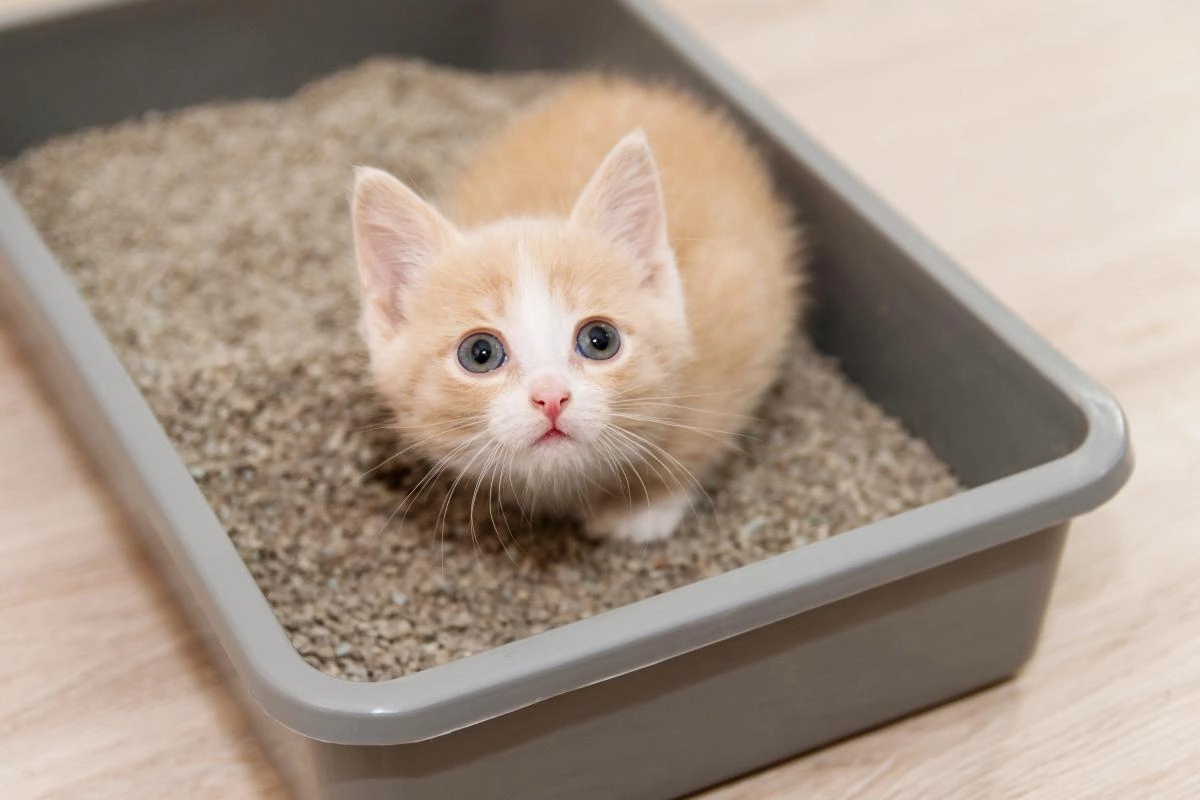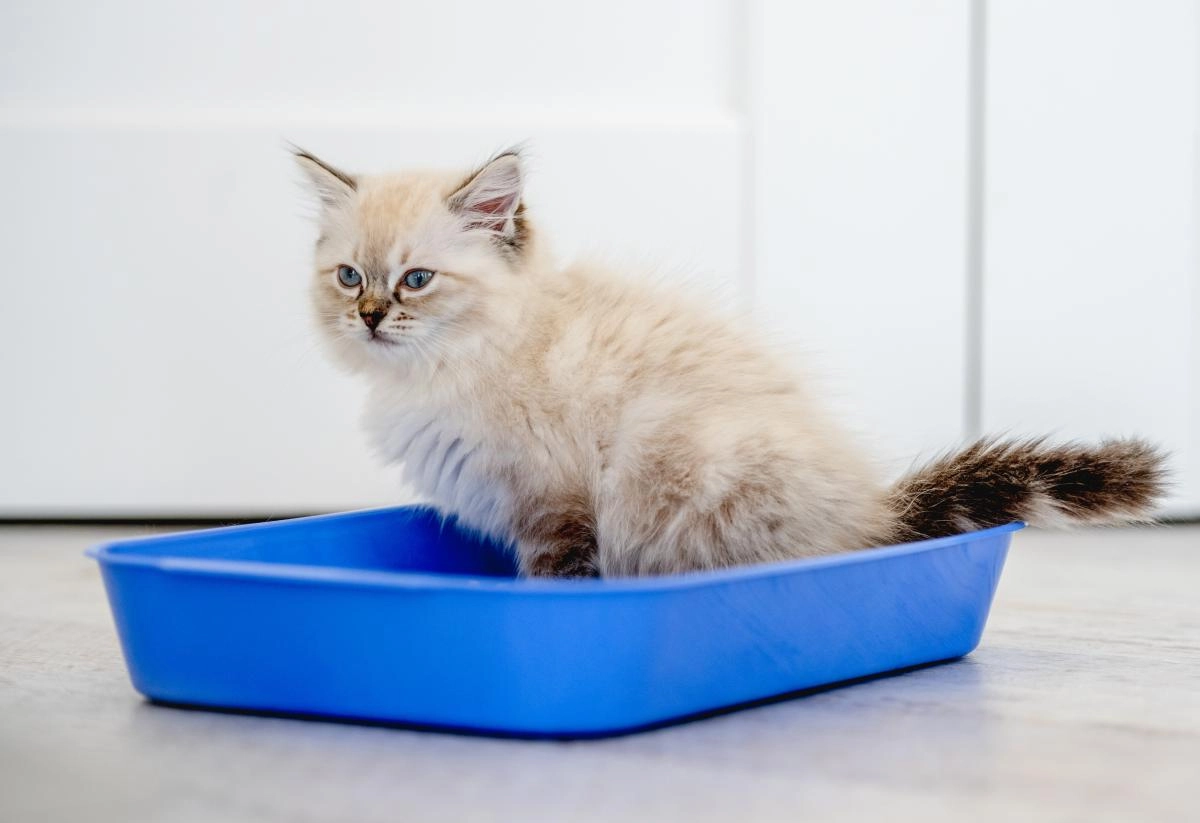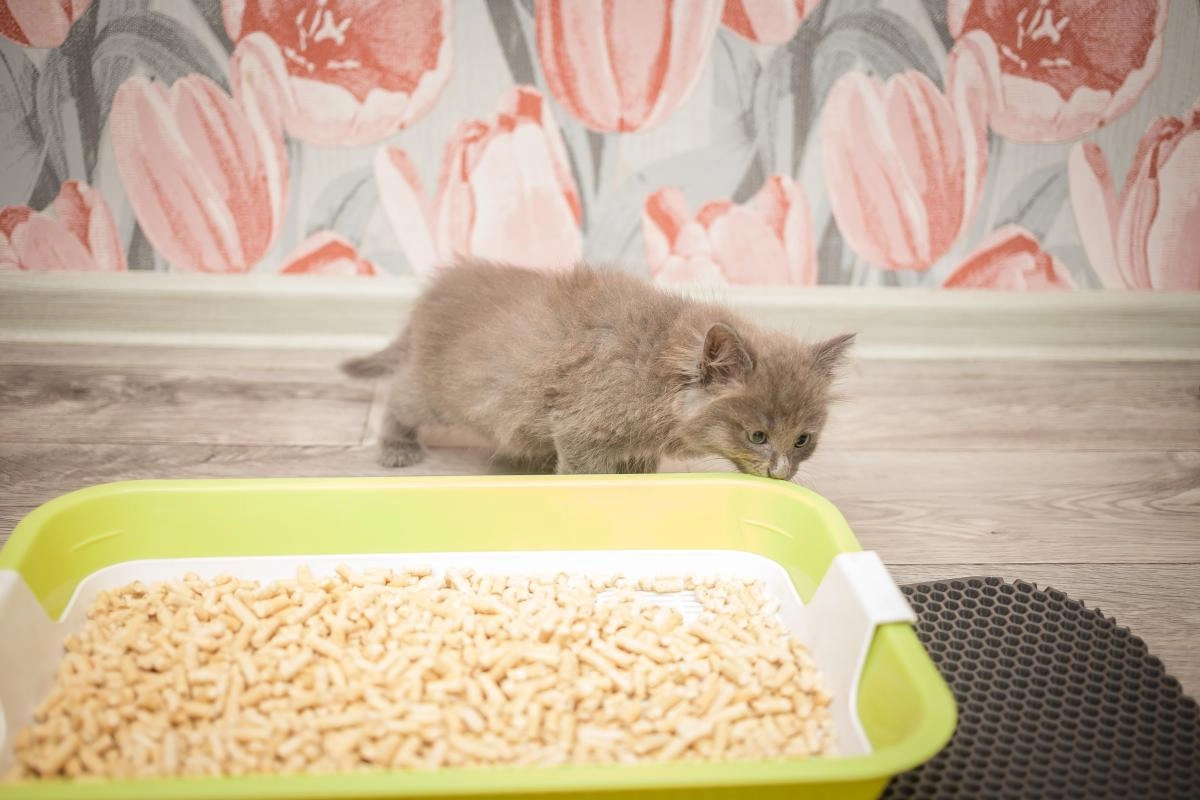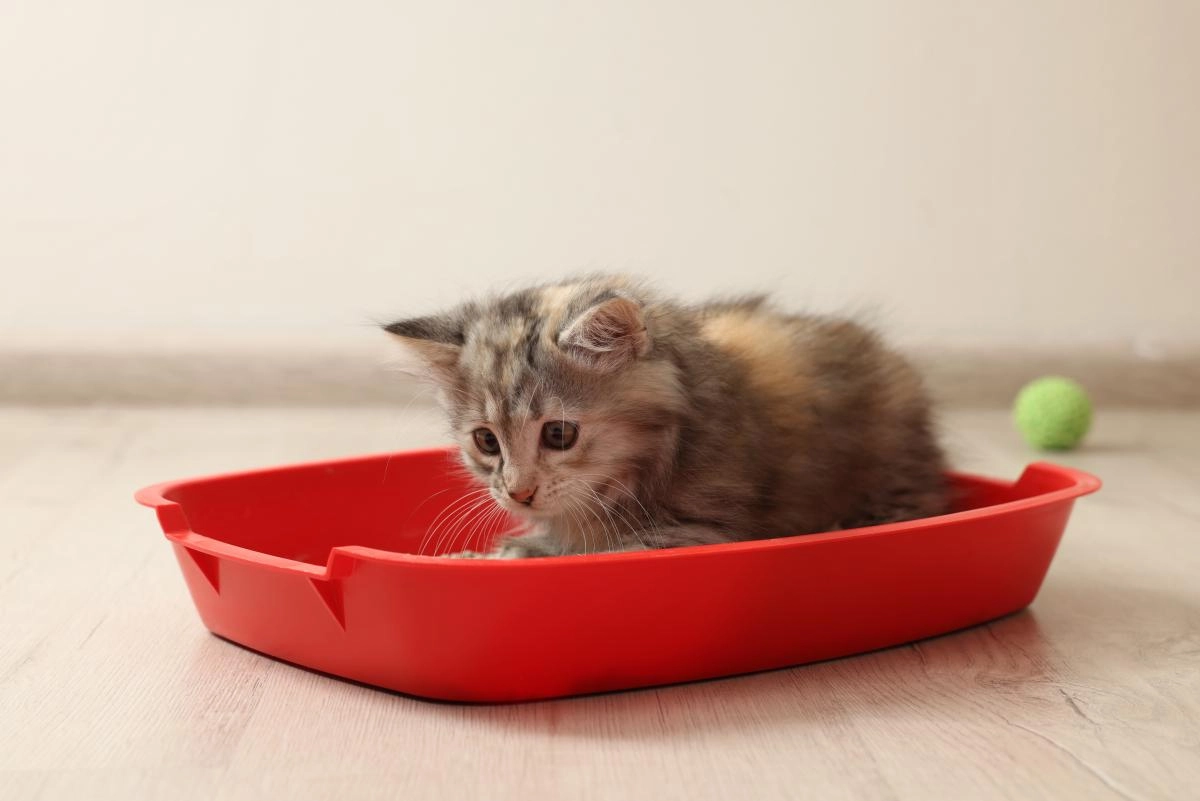Raising a cat: how to train a kitten to use the litter box

Photo source: 123rf.com
Toilet training is one of the main concerns owners have when raising a kitten, because no one likes to see puddles of urine in their home.
Using a litter tray for cats is almost a natural instinct, although some felines may need a little push to understand how it works. Let's give simple instructions on how to train a kitten to use a litter box.
The ideal litter box
1. Choose the perfect litter box. Here we are not talking about beautiful appearance and stylishness, but about functionality. It's useless to have a beautiful litter tray if the pet can't use it properly. The litter tray should be shallow with easy access.
2. Size matters. If you are not going to buy a new litter tray later, it is better to buy a bigger one right away so that your pet can use it at all stages of life. The litter tray should be large enough for the cat to rummage and dig in. This is very important.
Toilet tray for a kitten. Photo source: 123rf.com
3. type of filler. Once you have found the perfect litter tray, choose the right filler. There is a wide variety of fillers on sale, including mineral, wood, corn, silica gel.
It is desirable to choose a filler without dust, so that the kitten did not have negative sensations when inhaling, lumps and without odor. The choice should come from your preferences and the preferences of your pet. It is better to start toilet litter box training with compressed sawdust, which you can then replace with the type of filler you want.
When choosing a suitable litter, you should take into account the small disadvantages of each of them. For example, mineral filler can clump, and it is not recommended to use it for training kittens to the litter box, because the lumps he is likely to want to try "on the tooth", and this is fraught with serious constipation. The disadvantage of corn filler is that it is small, and its particles can remain on the cat's paws and then end up in different corners of our house. When choosing silica gel filler, it is worth paying attention to the fact that it rustles loudly when buried. This factor may scare the kitten away from the litter box, and you may be annoyed by this sound as well.
Toilet tray for a kitten. Photo source: 123rf.com
It is desirable that the filler does not emit any odors, because the bright smell may also be uncomfortable for the pet.
We also advise you to give preference to fillers, which you can easily buy in any pet store. Why? If suddenly your filler is not on the counter, your pet may not accept another filler and will stop using the toilet tray altogether. Opt for the type of litter the cat prefers.
A comfortable place
When deciding where to place the "toilet" for the kitten, it is desirable to do it in easily accessible places, but away from the kitchen, its resting place and from bowls with food and water. This place should not be passable and should be quiet so that the kitten feels safe there.
Try not to move the litter tray. Changing the location disrupts its routine, which will cause confusion and stress for the kitten.
Clean the litter box regularly
Remove the used litter daily and replace it with new litter, replace the litter completely once a week. Wash the litter box with water and neutral soap, as cats are sensitive to odors.
When the kitten is just getting used to the litter box, leave some used litter in the litter box so that the kitten does not forget what the litter box is for.
Toilet tray for a kitten. Photo source: 123rf.com
How to train a kitten to use the litter tray
It's time to teach your kitten how to use the litter box.
- Put the kitten in the litter tray and encourage him to dig in it (show him how to do this by simply scraping the litter with your finger).
- For the first few days, remember to put him in the litter box in the morning, after meals and playtime, so he learns that this is the proper place for his needs.
- If you notice that the kitten starts digging up the couch, floor, etc., fussing and squatting in the wrong place, take him to the litter box immediately, as this is a sign that he needs to urinate or defecate.
- When he does it right, be sure to praise him and pet him, perhaps even give him a treat.
It is possible that your kitten will not immediately understand what the toilet litter box is for and will not use it for its intended purpose. You can also use a tricky trick to accustom the kitten to the toilet litter box: just actively play with him near the litter box, because after the games kittens also want to go to the toilet, which just happens to be nearby. In any case, the owner of a young representative of felines should be patient, because some kittens instantly grasp the information and do what they want, and others will not be able to immediately orient themselves. Time, your patience and no shouting and punishment.
The litter tray has become too small for the cat. Photo source: 123rf.com
If the cat keeps looking for a place to go to the toilet in alternative places
Some cats, regardless of age, "forget" that it is necessary to go to the toilet in the litter box, and we begin to meet unpleasant puddles throughout the apartment. Why does this happen? There may well be a logical reason for this cat behavior. Here are some of them:
- The tray has become small for the cat;
- A new filler that the cat does not like;
- A dirty litter box, and cats are very clean animals;
- Sharp odor from the litter box (from the filler, from the litter box itself after washing, etc.);
- The litter tray is in a noisy, passable place where the pet does not feel safe.
You should also keep in mind that if you have more than one cat living in your house, each of them should have its own litter box, plus one more - a spare (for example, three cats - four litter boxes). That is, there should always be one more litter box than the number of pets living in the house.
If all the reasons are corrected and the problem persists, make an appointment with your veterinarian to see if the cat has any problems that may make toilet litter box training difficult.